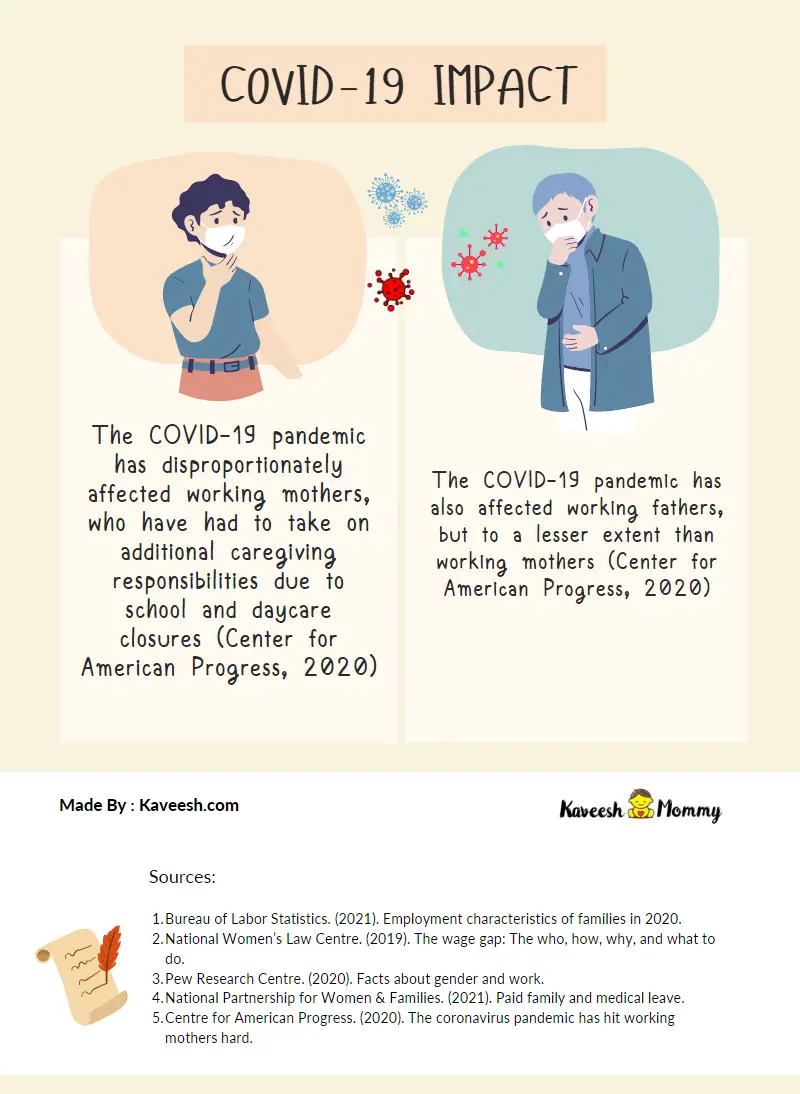The relationship between working mothers and fathers has long been a topic of discussion and debate. While the workforce has evolved to become more accepting of working mothers and fathers, there are still disparities that exist.
Many statistics and facts exist that highlight the differences between working mothers and fathers in terms of employment, earnings, caregiving responsibilities, and workplace discrimination.
Understanding these differences can help to identify areas for improvement and support both working mothers and fathers in achieving work-life balance.
“Working Moms vs. Working Dads: Who Has It Harder in the USA?”
“USA Statistics Reveal: Why Working Moms Are the Ultimate Multitaskers”
Our infographic provides a comprehensive look at the disparities between working mothers and fathers, with statistics and facts on employment, earnings, caregiving responsibilities, and workplace discrimination. It provides valuable insights into the challenges faced by working mothers and the need for more supportive and inclusive workplace policies.



“The Gender Divide in the USA Workplace: Comparing Working Moms and Working Dads”
“Gender Wars in the Workplace: Facts and Figures on Working Moms and Working Dads”
- In 2020, 70% of mothers with children under 18 were employed, compared to 93% of fathers. (Bureau of Labour Statistics, 2021)
- Women who have children earn 14% less than women who do not have children, while men who have children earn 6% more than men who do not have children. (National Women’s Law Centre, 2019)
- Women are more likely to work part-time or take breaks in their careers to care for children, which can affect their earning potential. (Pew Research Centre, 2020)
- Mothers spend an average of 14.2 hours per week on childcare, compared to fathers who spend an average of 7 hours per week. (Bureau of Labor Statistics, 2021)
- Women are more likely to work in occupations with lower salaries, such as education and healthcare, while men are more likely to work in higher-paying fields, such as technology and finance. (Pew Research Centre, 2020)
- In heterosexual couples, mothers still do the majority of household chores and childcare, even if they are employed full-time. (Pew Research Centre, 2020)
- Working mothers are more likely to experience discrimination in the workplace, such as being passed over for promotions or being paid less than male colleagues. (National Women’s Law Centre, 2019)
- Fathers who take paternity leave are more involved in their children’s lives and have better mental health outcomes. (National Partnership for Women & Families, 2021)
- Working fathers are more likely to receive workplace accommodations, such as flexible schedules or telecommuting, than working mothers. (National Women’s Law Centre, 2019)
- The COVID-19 pandemic has disproportionately affected working mothers, who have had to take on additional caregiving responsibilities due to school and day-care closures. (Centre for American Progress, 2020)
Sources:
Bureau of Labor Statistics. (2021). Employment characteristics of families in 2020.
National Women’s Law Centre. (2019). The wage gap: The who, how, why, and what to do.
Pew Research Centre. (2020). Facts about gender and work.
National Partnership for Women & Families. (2021). Paid family and medical leave.
Centre for American Progress. (2020). The coronavirus pandemic has hit working mothers hard.
